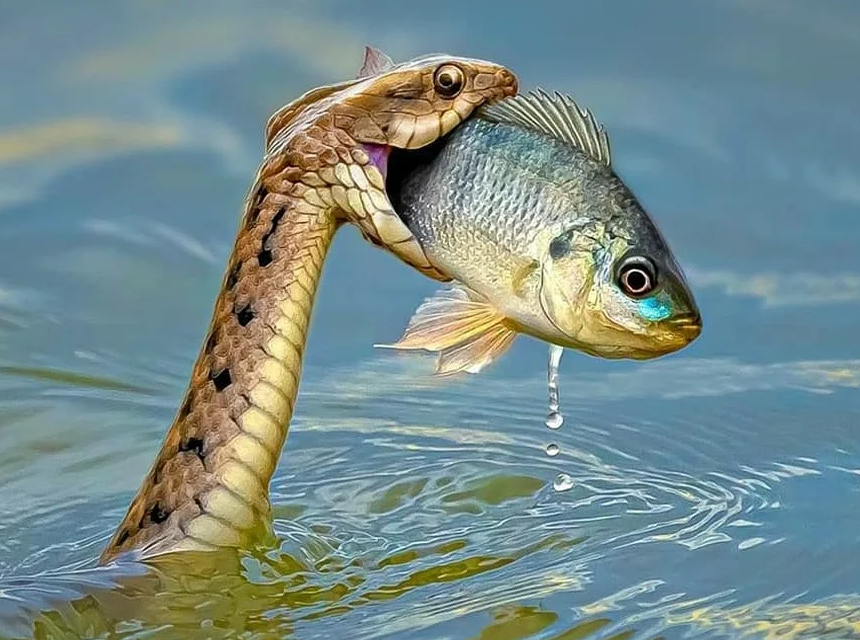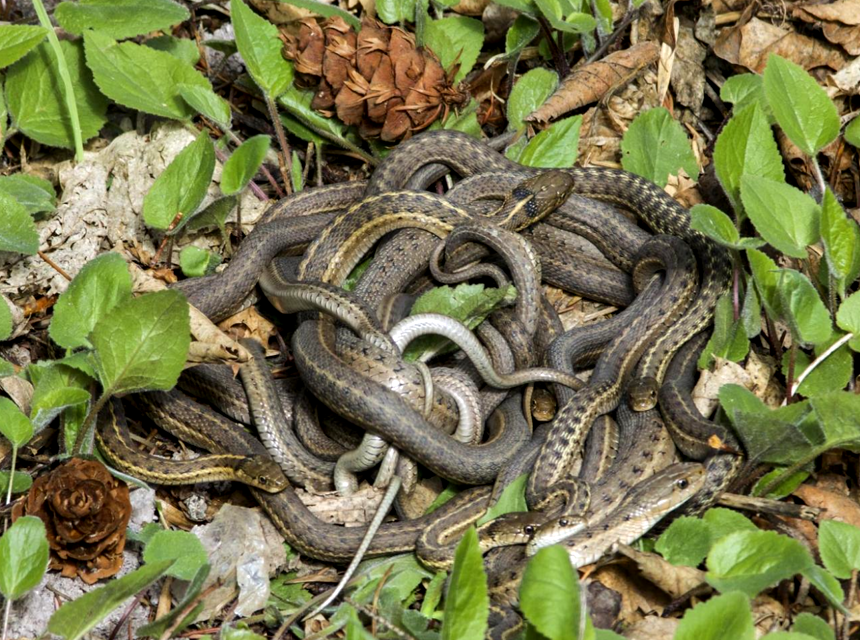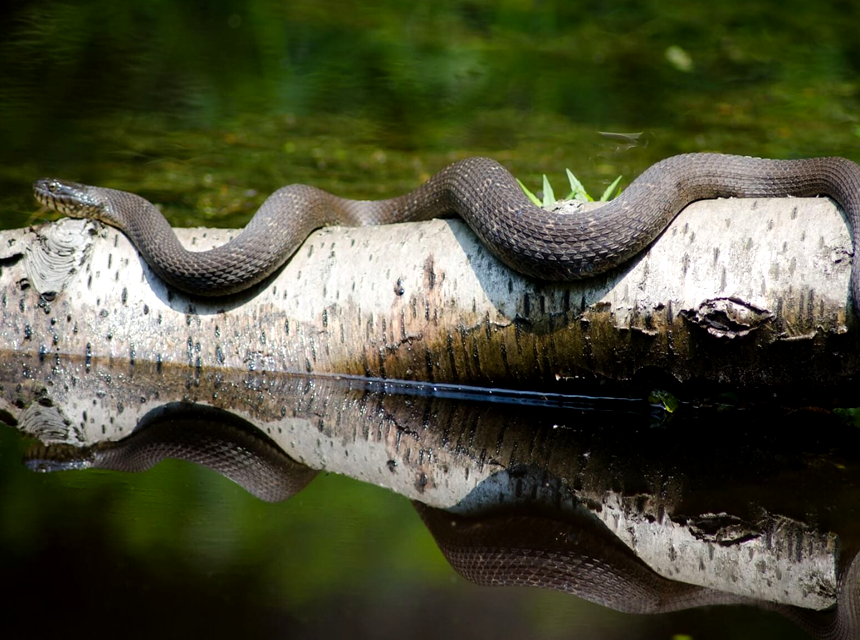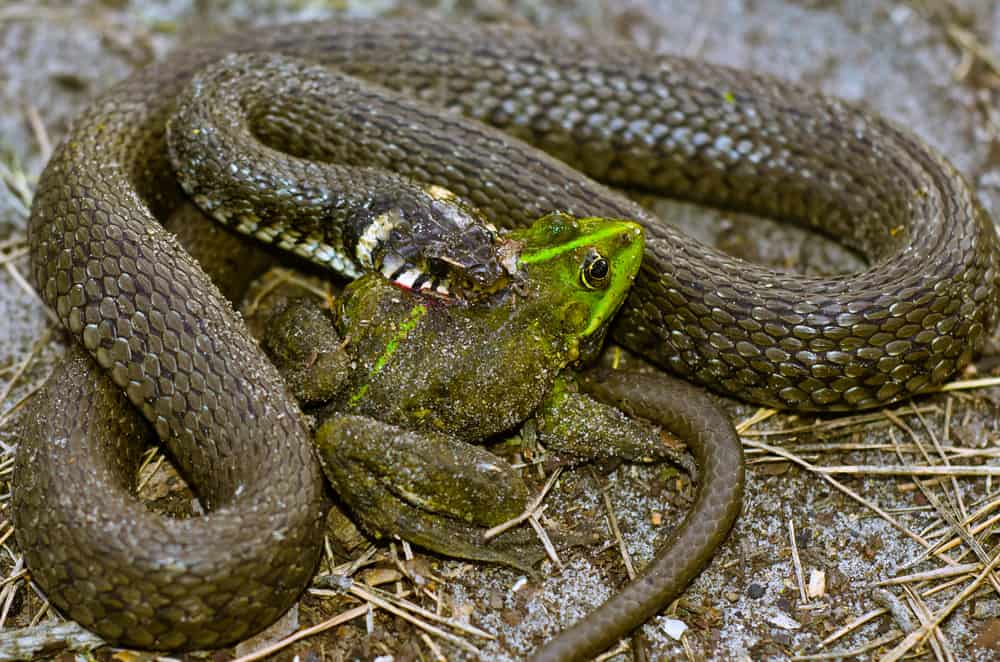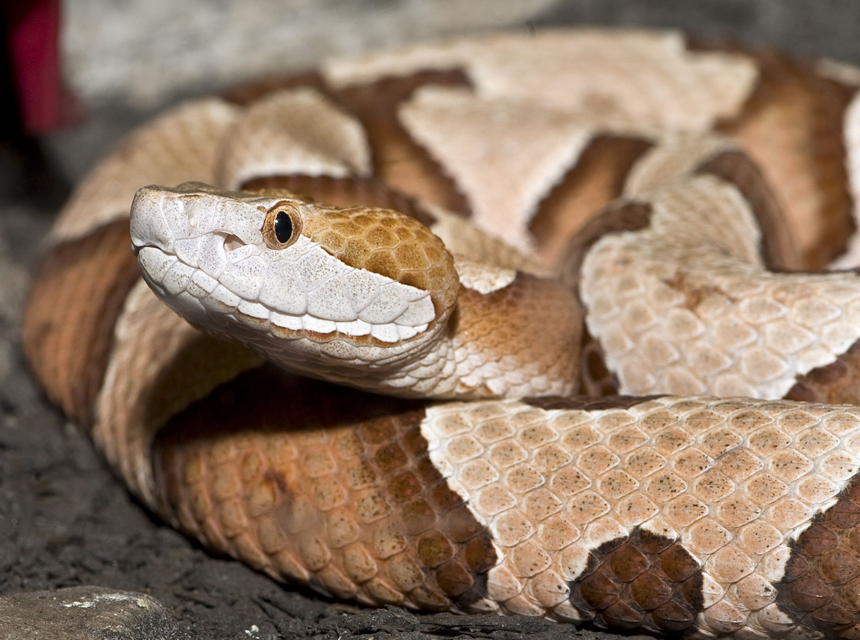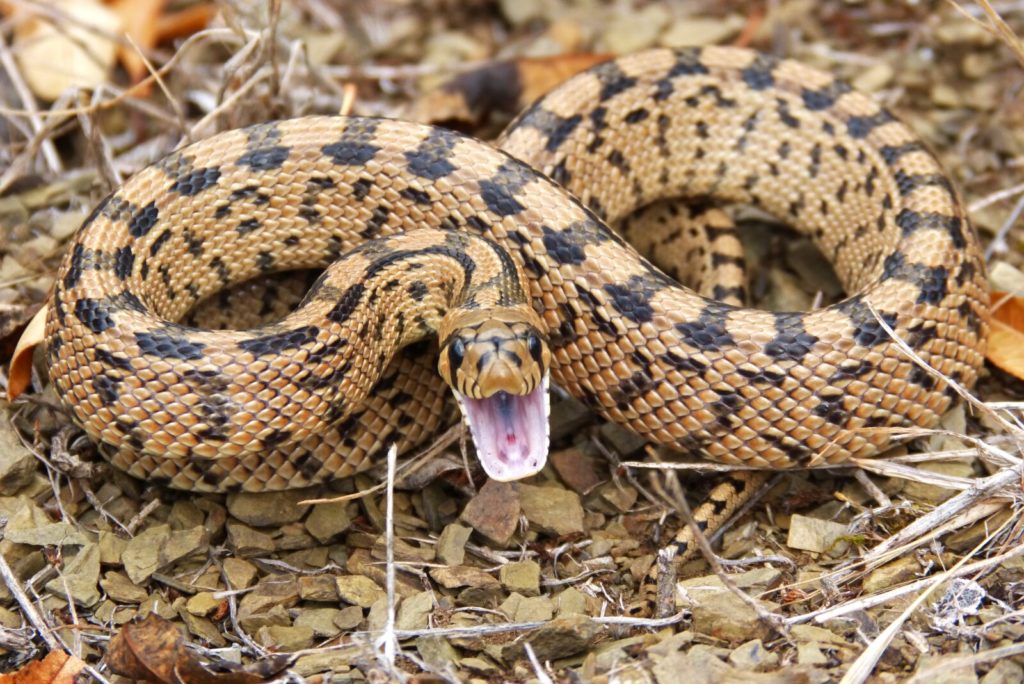

If you have a pet snake and notice it eat itself, you must have been completely scared, confused, and curious. Some pet snake owners end up asking the question, why do snakes eat themselves? But it does not mean you have an Ouroboros, a mythical self-devouring snake.
There are different reasons a snake will try to eat itself, from heat and temperature to stress. Our guide covers different reasons why snakes eat themselves. We’ll also tell what you can do to prevent this and keep them safe.
Now, why do some snakes eat themselves?
The main reason why snakes eat themselves is that they are stressed or unable to thermoregulate efficiently.
This usually happens for pet snakes because they don’t have the chance to move around like in the wild and regulate their body temperature. They also have no form of release when they are stressed, so they end up eating themselves.
Sometimes, a snake might be eating itself when trying to eat another snake. They might not even notice that they are doing it until it’s too late. Here are some reasons why a snake might be eating itself.
Snakes are cold-blooded, so their temperature depends on the outside environment. They cool down when it’s cold outside, and when it’s hot, they heat up. This is why they like to sunbathe in the morning to raise their temperature. If a snake can’t find a shady spot when they feel too hot, they begin to overheat.
For pet snakes, this becomes a problem because the tank might not have a cool shade or the heating lamp is too hot. The body temperature will be the same as the tank, leading to a state of being poikilothermic Trusted Source Definition > Poikilotherm - Poikilothermy - Heterotherm - Heterothermy Poikilothermic organisms have a variable internal temperature. Their temperature is not regulated as it is in homeothermic animals, whose temperature varies little. Poikilotherms are often called… www.futura-sciences.us . This means they are unable to self-regulate their temperature.
When a snake is too hot, they become agitated and confused, making them unable to differentiate its tail from a prey animal. Then, they will eat their tail. This happens for snakes in captivity because they can’t look for shade.
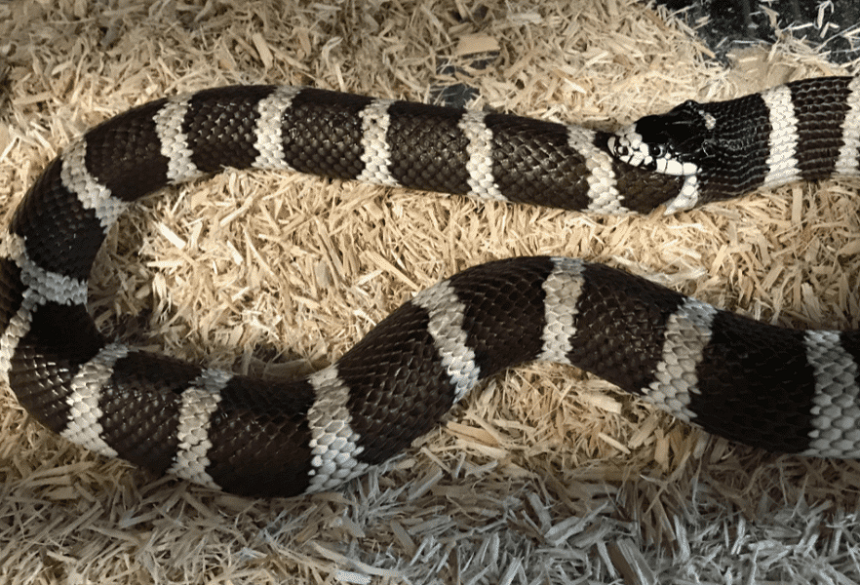
Another reason why your snakes eat themselves is stress. While we are free to find ways to release stress, snakes are stuck in a tank, and this can cause them to become stressed. If they are ill, being touched too often, or the tank is too hot, they respond to stress by eating.
The stressed snake will become confused and think its tail is the prey, and then it will bite into its tail, practically devouring itself.
When a snake is shedding Trusted Source Why Do Snakes Shed Their Skin? - DNR News Releases www.iowadnr.gov , it might shed its eye caps, which means it can’t see or its vision is blurry for a while. During this time, they can end up biting their tail because they mistake it for food. They will try to consume the prey, not knowing they are biting themselves.
Older snakes will most likely eat themselves more than the younger ones. This also goes for those that are suffering from chronic illnesses. Snakes eat themselves when they are sick or old, but you should look out for this behavior if you have any pets in these categories.
Increased metabolism is also related to overheating. When a snake cannot cool itself down, it goes into hypermetabolism.
If a snake is overheating, its metabolism goes into overdrive, and they are tricked into thinking they are hungry.
Since they digest food slowly, it ends up eating itself.
When a snake in the wild suffers from hypermetabolism, it will hunt and eat prey it would’ve left alone on a usual day. It would even hunt when it doesn’t want to eat. So, the snake tries to do that in the tank but ends up eating in this confused state.
A final and simple answer to why snakes sometimes eat themselves is confusion. When a snake is disoriented, it might think its tail is prey and eat itself. A snake can become disoriented because of stress or temperature issues.
Or, it might be eating and think its tail is part of the meal. This is usually the case in a small tank because the snake is squeezed in. The small tank can also make the snake more stressed. This is why it is important to choose a tank that has enough space for a snake like the REPTI ZOO Tank.
It is very dangerous for a snake to eat itself.
It’s important to note that when a snake eats itself, it does not end in a single bite. Snakes eat by swallowing their prey whole rather than biting it in bits.
So when a snake eats itself, it consumes its body until the heat is regulated. Sometimes, it does not realize that it is eating itself until it becomes completely stuck.
Many snakes have backward-pointing teeth Trusted Source How Snakes Swallow - JSTOR Daily A snake’s ability to swallow enormous prey has long been a source of fascination, but the common explanation that they dislocate their jaws is a myth. daily.jstor.org , which stop prey from escaping while trying to swallow them. So, if a snake is eating itself, it won’t be able to let go and will eventually die. They can also suffocate with their bodies down their throat, suffer blood loss from teeth punctures, or get an infection after letting to.
If a snake can’t let go as it is swallowing itself, it could digest its own body, go into shock, and die.
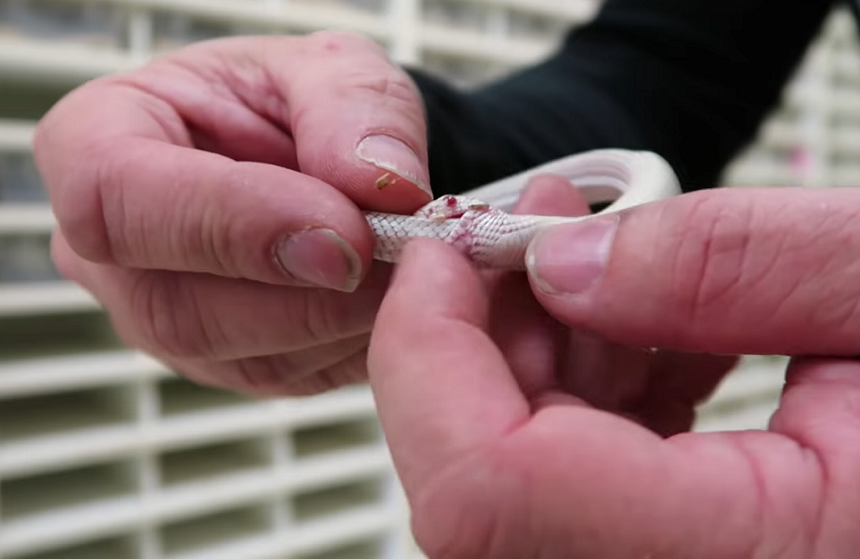
Here are some steps to follow if you see that a snake is eating itself.
If your snake tries to eat itself regularly, it’s best to take it to the vet and get it checked out, as it might be sick.
If it happens once and does not repeat, you don’t have to worry about the pet.
Now that you know the answer to why snakes eat themselves, although you can save your snake by acting quickly, it’s always better to prevent it in first place. Here are some helpful tips.
Why do king snakes eat themselves?
King snakes Trusted Source Species Profile: Eastern Kingsnake (Lampropeltis getula) | SREL Herpetology srelherp.uga.edu usually try to eat themselves because their body temperature is too high, and they cannot regulate it efficiently. Also, if they are stressed, they will eat themselves. Although there isn’t a particular specie that does this more than any other snake, it has been noticed dominantly in king snakes.
Can venom snakes poison themselves?
Snakes cannot poison themselves. The antibodies will eliminate the venom injected into the blood if it bites itself. It turns into harmless pieces of protein that are removed by the kidneys. Even if your venomous snake bites itself, it cannot die from poison.
Now that we’ve covered the answer to “why do snakes eat themselves”, you can explain this weird behavior and even prevent it from happening again. Take care of your snake’s surroundings and act fast if you ever notice them biting its tail.
